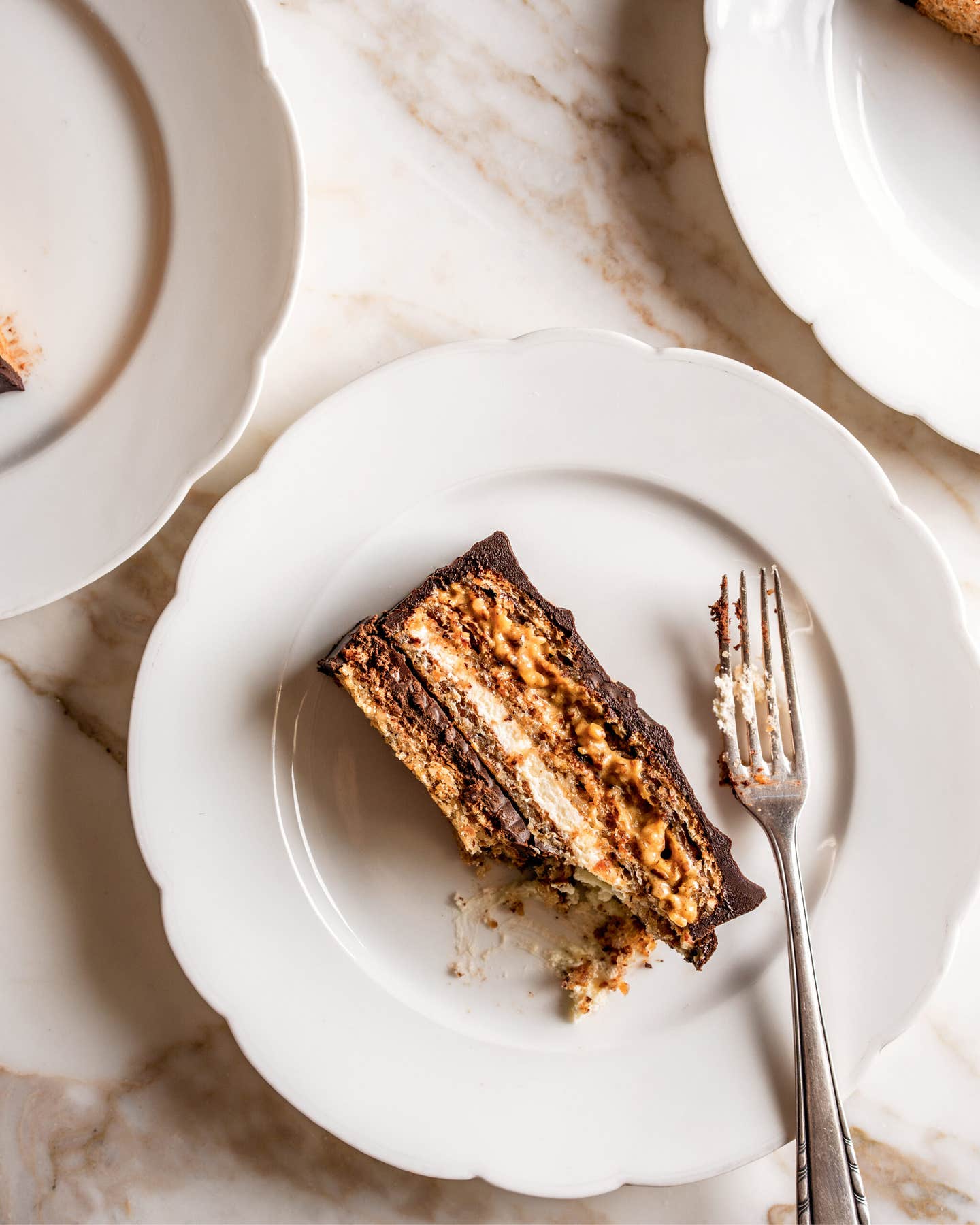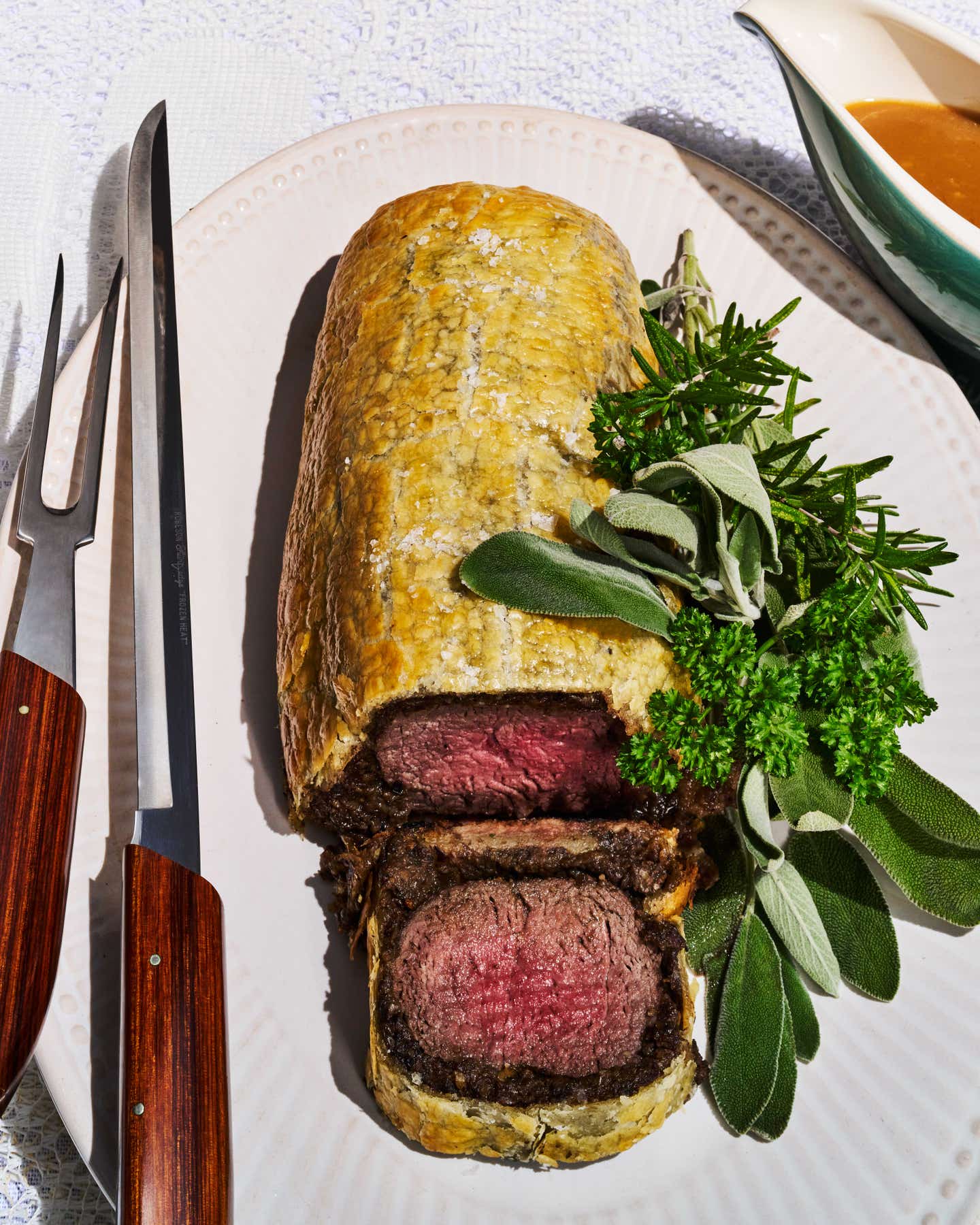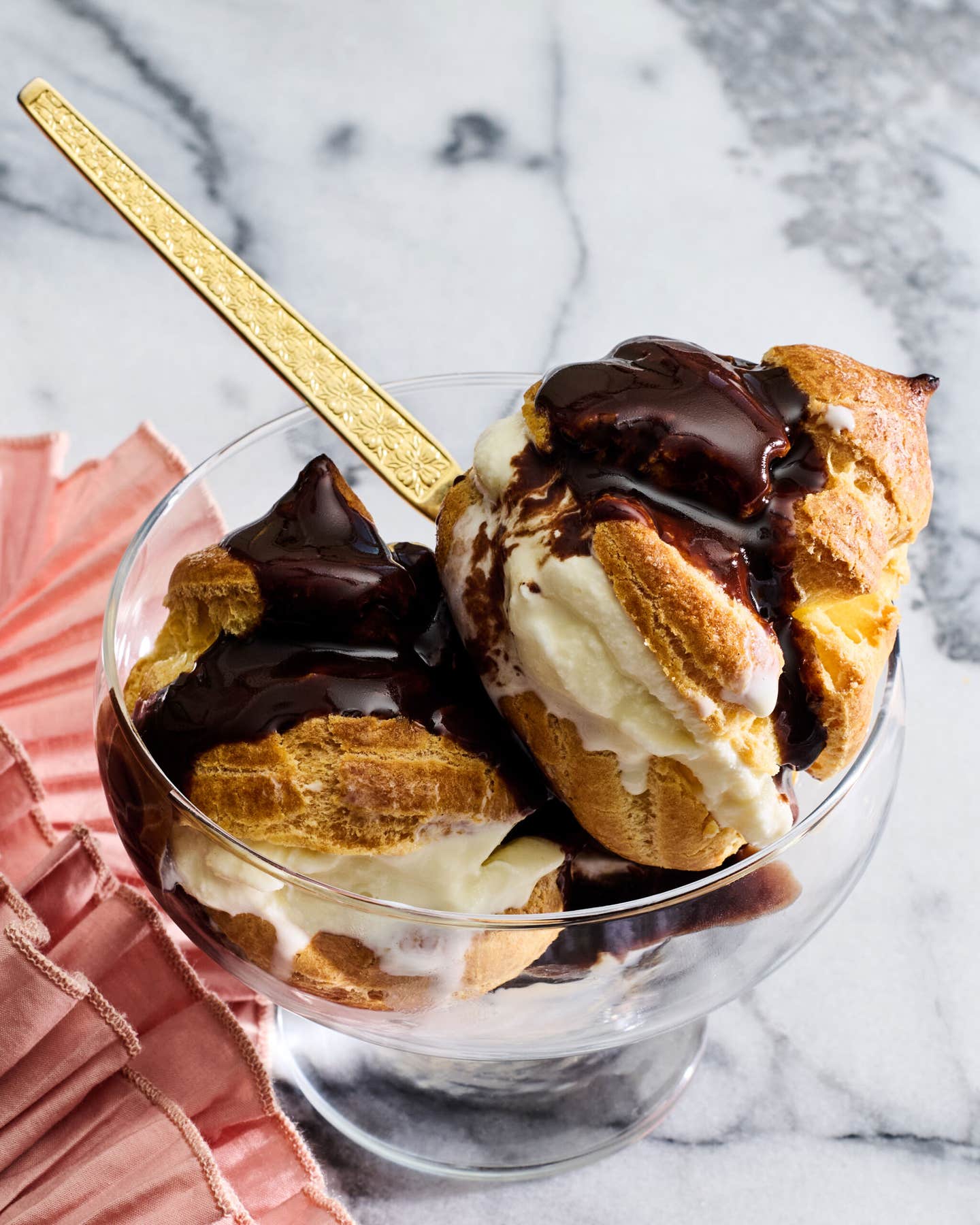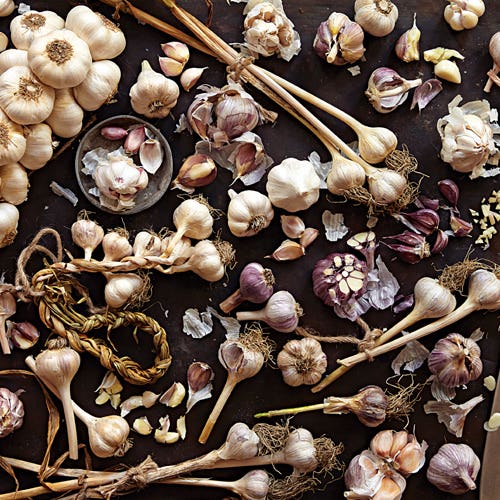
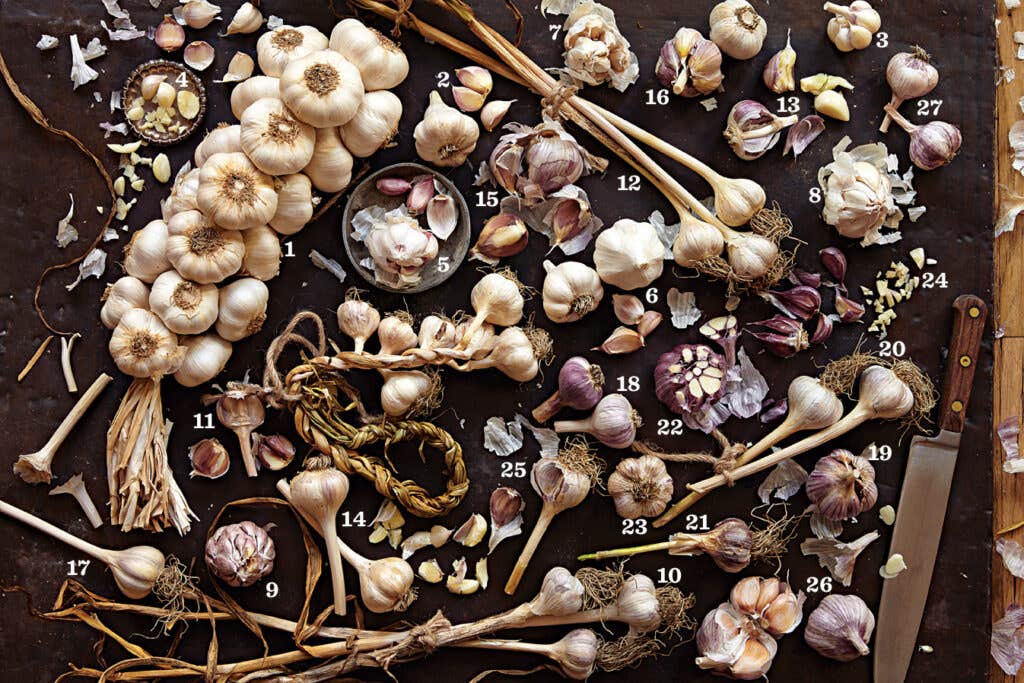
There are two main types of garlic: softneck and hardneck. Softneck garlics, with their spongy central stalks, are further subcategorized. Artichokes, a subtype named for their layers of overlapping cloves, include (1) Monviso, whose big, juicy segments mellow beautifully in pasta dishes; sweet (2) Inchelium Red, which shines in mashed potatoes; (3) Transylvanian, a spicy Romanian garlic; and (4) Polish White and (5) Polish Red, whose rich-tasting cloves make a great confit.
Silverskins, with their satiny wrappers, include mild (6) Nootka Rose, whose moderate heat we like in fried rice; modestly acerbic (7) Mild French, which makes a lovely aïoli; and (8) Silver White, which delivers a blast of heat—a little goes a long way in dressings.
Creole garlics like (9) Ajo Morado were spread from Spain with the conquistadors. They bring a sharp bite to cold soups like ajo blanco.
Hardneck garlics have a woody central stalk. Rocamboles like (10) Spanish Roja and (11) German Red are among the most popular hardnecks; their easy-to-peel cloves make them a hit with chefs.
Porcelain garlics have the highest level of the enzyme allicin, and tend to be more pungent. They include (12) Music; (13) Northern White; (14) Romanian Red; (15) Yugoslavian, whose spicy purple-wrapped cloves yield a sweet aftertaste; and white-hot (16) Georgian Fire and (17) Georgian Crystal.
Purple-stripe garlics are easy to spot with their striking markings. (18) Metechi and (19) Bogatyr are the spiciest; (20) Pskem has a nutty scent; (21) Khabar has a knockout pungency; (22) Persian Star, from Uzbekistan, is milder; and pink-cloved (23) Siberian is more delicate. (24) Chesnok Red takes on a deep sweetness when roasted—it's great for garlic ice cream. (25) Korean Red, an Asiatic garlic, has a vivid flavor that sings in kimchi.
Turban garlics, named for the turban-shaped seed pods that form on the end of their scapes, include musky (26) Russian Tzan and bold-tasting (27) Thai Fire—our choice for stir-fries.
Keep Reading
Continue to Next Story
